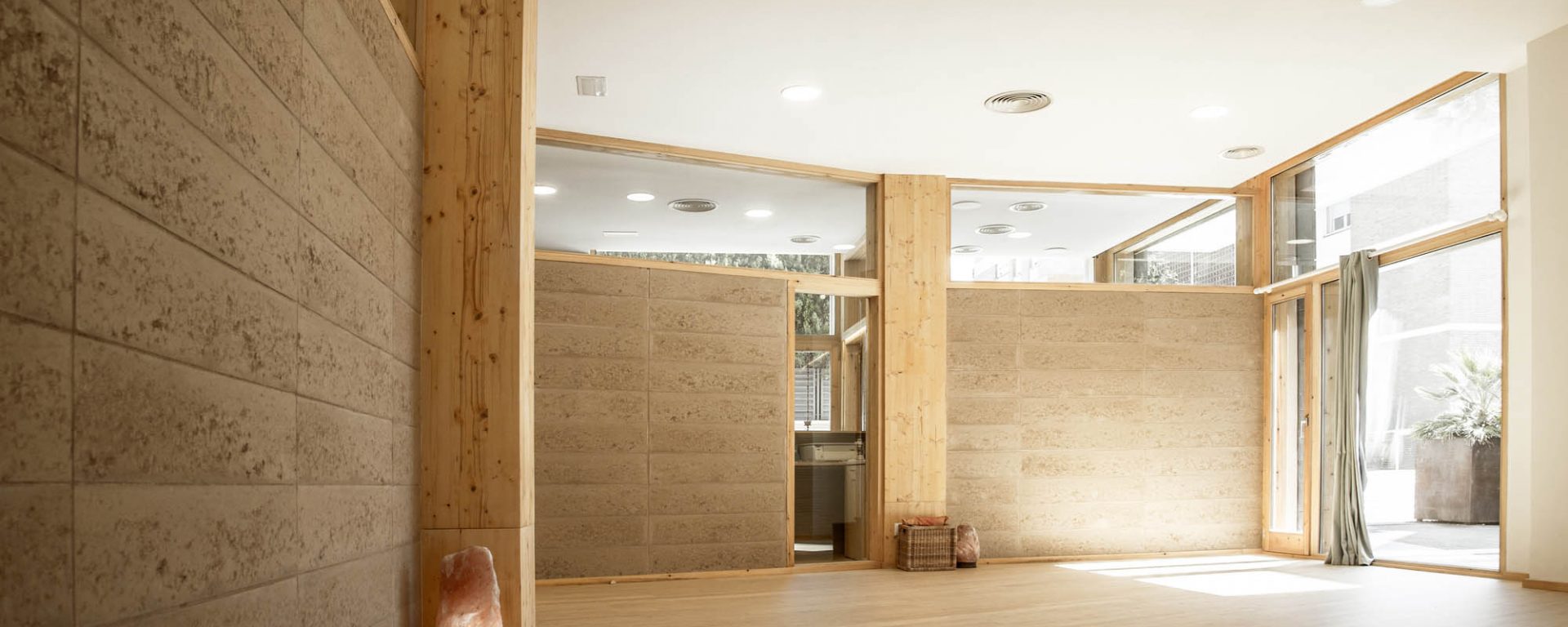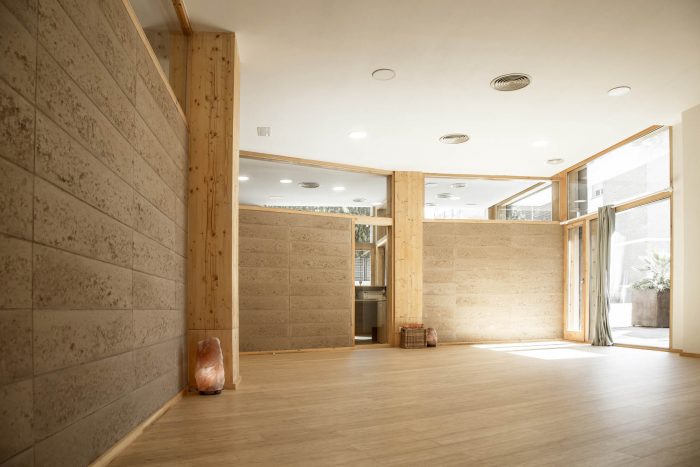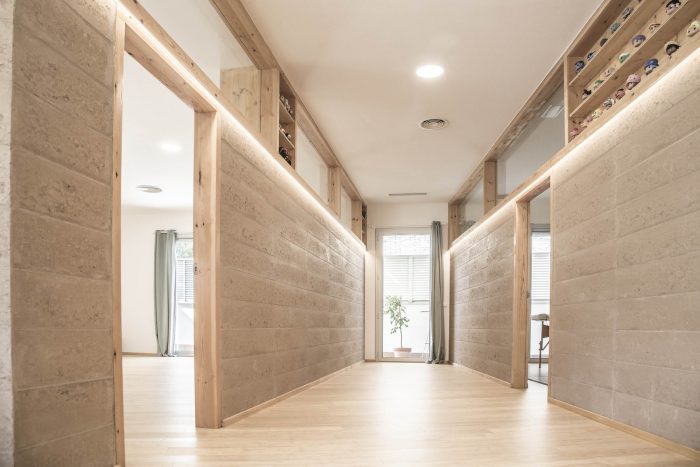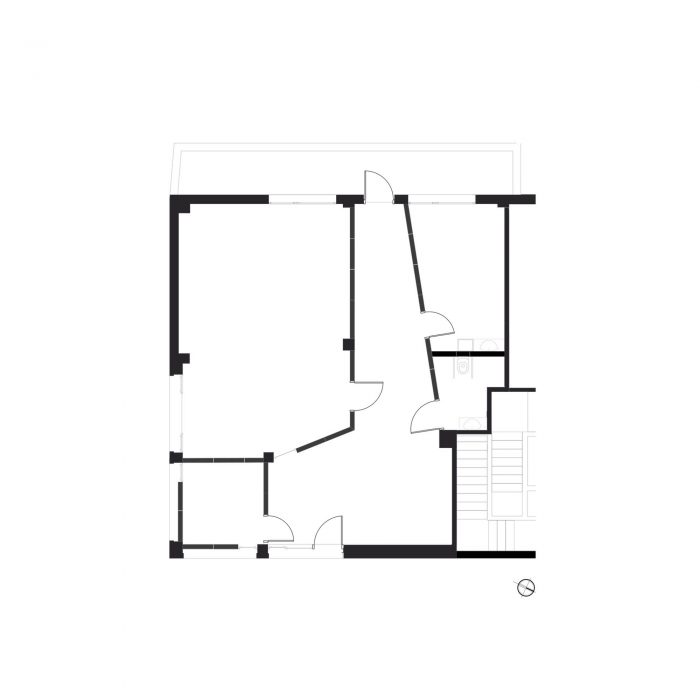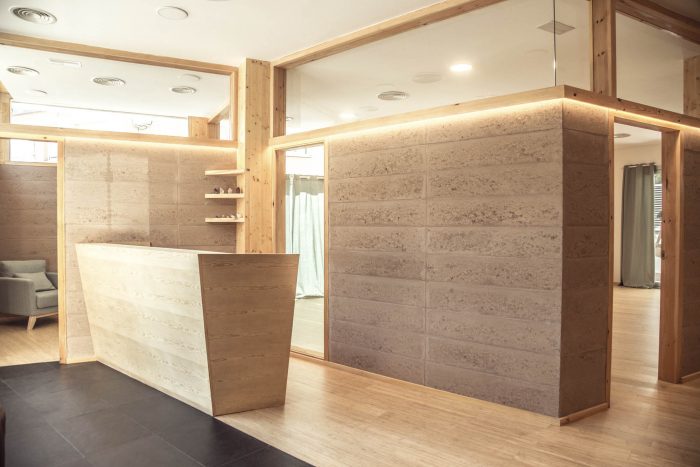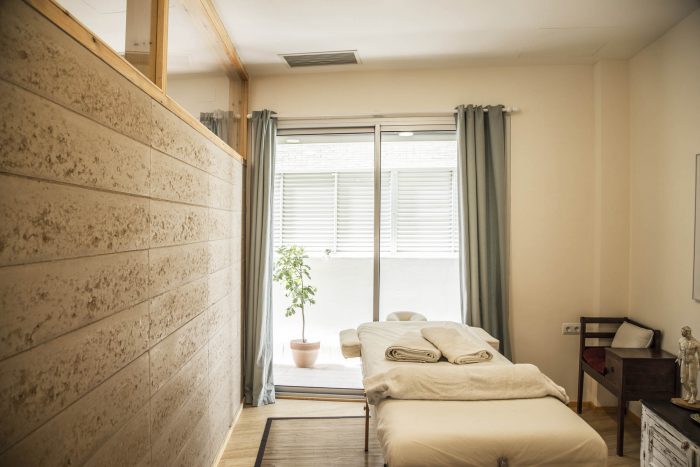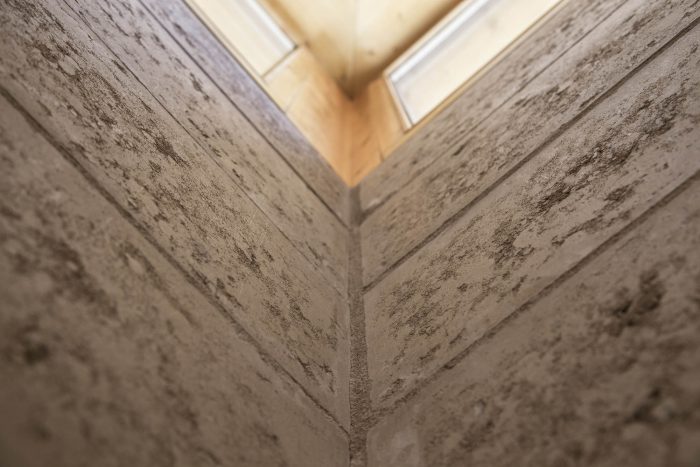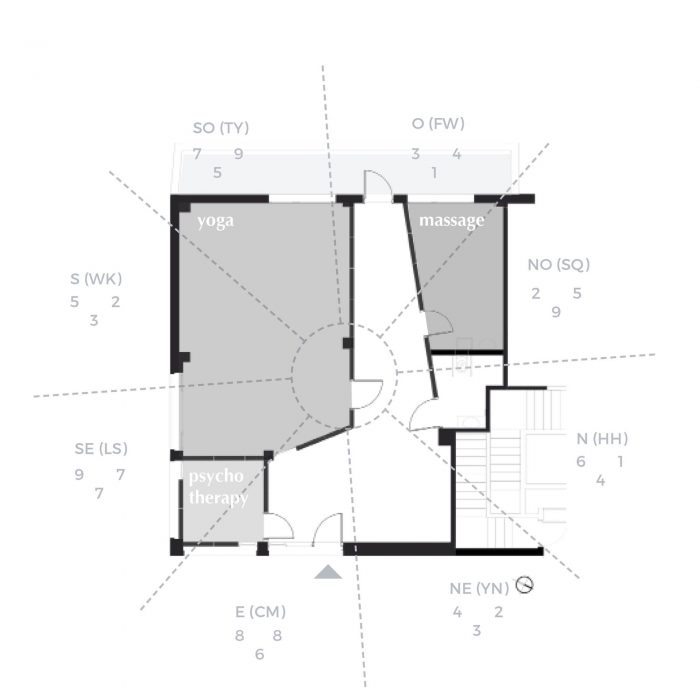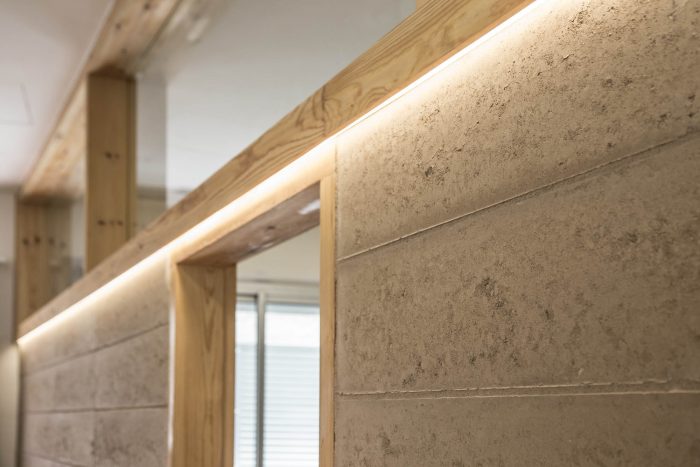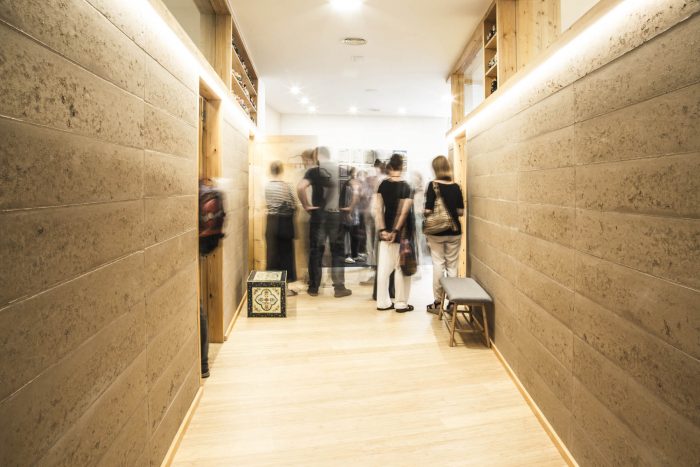MIBI瑜伽中心位于一栋住宅楼的底层,是用预制的夯土块建造的。这是巴塞罗那地区第一个使用这种技术的项目。
The MIBI yoga centre, on the ground floor of a residential building, was built with prefabricated rammed earth blocks. It is the first project using this technique in the Barcelona area.
和欧洲大多数地区一样,土被广泛用于该地区的乡土建筑中。在过去的几十年里,它被混凝土和砖块所取代,但它是一种未来的材料:土是一种低碳材料,它是一种天然的、可在当地获得的资源,它是完全可回收的。
Earth was widely used in vernacular architecture in this region, as in most regions of Europe. It was replaced by concrete and bricks over the last decades, but it is a material of the future: earth is a low-carbon material, it is a natural and locally available resource and it is completely recyclable.
方案和设计。平面图将一组对角线与现有建筑的正交分布相呼应,引导用户从接待处到后方的露台。两条光线沿着这条道路运行,突出了土墙的纹理,创造了一个舒适的氛围。土墙的视觉质量与它的上层玻璃形成对比,使自然光得以进入。视线可以穿过会场,让人看到后方的露台。
由于有多个直接和间接的光源,接待处被设计成特别明亮的空间。木制的定制家具遵循空间的对角线。在地板上,两种不同的材料标志着接待处和瑜伽区之间的界限,前者用天然石板铺设,后者用竹子铺设,人们赤脚行走。
从接待处出来,走廊将我们引向多功能厅,该厅通向后方的露台。在这里,人们赤脚、坐着或躺在地上,体验着木质和土质表面的视觉和触觉。按摩室位于瑜伽中心的内部。
心理治疗室占据了建筑的一角,在商店的窗户后面,因为根据风水哲学,这是最适合这项活动的区域。为了能够将这样一个私密的房间放在人行道旁边和街区的拐角处,在以前商店窗户的下半部分建造了两道土墙。这为心理治疗室创造了一个被四面土墙包围的包围性和舒适的空间。这种设计也使建筑外部的土的存在具体化,成为该街区角落的特征。
Programme and design. The floor plan counterpoises a set of diagonal lines to the orthogonal distribution of the existing building, guiding the users from the reception to the rear terrace. Two lines of light run along this path, highlighting the texture of the earthen walls and creating a cozy atmosphere. The visual mass of the earthen walls contrasts with their glazed upper part, which lets in natural light. Sight can cross through the venue, giving a glimpse of the rear terrace.
The reception has been designed as particularly luminous space, thanks to multiple direct and indirect light sources. The wooden custom-made furniture follows the diagonal lines of the space. On the floor, two different materials mark the limit between the reception, paved with natural slate, and the yoga zone, where people walk barefoot, paved with bamboo.
From the reception, the hallway leads us to the multifunctional hall, that opens onto the rear terrace. Here, barefoot, sitting, or lying on the floor, people experience the sight and the touch of the wooden and earthen surfaces. A massage room is located in the inner part of the yoga centre.
The psychotherapy room occupies the corner of the building, behind the shop windows, because this was the most appropriate zone for this activity according to Feng Shui philosophy. To allow placing such an intimate room next to the sidewalk and on the corner of the block, two earthen walls were built in the inferior part of the former shop windows. This created an enveloping and cosy space for the psychotherapy room, surrounded by four earthen walls. This design also materialises the presence of earth on the outside of the building, characterising the corner of the block.
生物气候学特征。选择泥土是该场所被动式加热和冷却设计的一部分。作为一种高热质量的材料,土通过延时释放吸收的太阳热量来平衡温度的波动,并提供稳定的室内温度。此外,地球从室内空气中吸收水分,并在空气变得干燥时释放水分,调节湿度,提供一个健康的生活环境。
Bioclimatic features. Choosing earth is part of the passive heating and cooling design of the venue. As a high thermal mass material, the earth evens out temperature fluctuations by time-delayed releasing of absorbed solar heat and provides a stable indoor temperature. Moreover, the earth absorbs moisture from the indoor air and releases it when air gets dry, regulating humidity and providing a healthy living environment.
其结果是一个可持续的、温馨的场所,它反映了米比瑜伽中心的作用:一个健康、幸福和良知的庇护所。
The result is a sustainable and welcoming venue, which reflects the role of the MiBi yoga center: a refuge for health, well-being, and conscience.
Architects: Elisabetta Carnevale Arquitectura De Terra
Area: 1206 m²
Year: 2019
Photographs: André Roseira Costa
Manufacturers: AutoDesk, Com Cal
Design Team:Elisabetta Carnevale, David Pradas Ruiz,
Clients:Private
Consultants:Avel•lí Hernández
City: Barcelona
Country:Spain

